Bugs are an integral part of our ecosystem, but have you ever wondered: where do bugs go in the winter? As the temperature drops, many insects find ways to survive the cold. We’ll cover 8 ways that insects survive cold weather, along with where 10 different types of bugs (ants, termites, bees, wasps, spiders, flies, mosquitoes, moths, butterflies, and others) go during winter.
Bugs do one of 5 things in the winter: get in your house, migrate somewhere warmer, hibernate, lay eggs and die, or go into diapause (which is a dormant state that helps them survive without food or water).
Different species of insects have different ways of surviving the winter, and we’ll cover the most popular ones (along with the 5 insect cold weather survival methods) in this guide.
Understanding Bug Survival in Winter
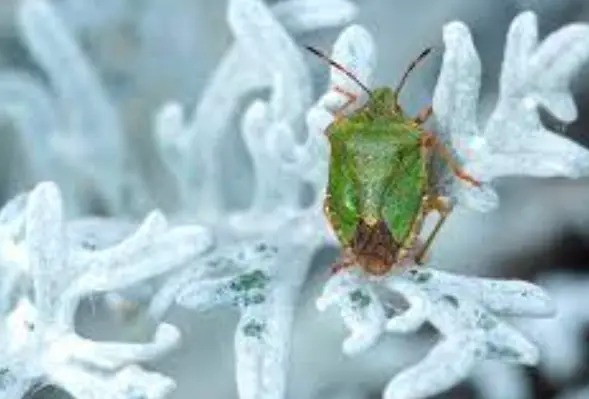
Bugs are a diverse group of organisms that inhabit every corner of the world. But when winter arrives, they face a challenging time. The cold temperatures and reduced food availability make it difficult for them to survive. Bugs have evolved several strategies to cope with winter, including overwintering, hibernation, infiltration, migration, and freeze tolerance.
Overwintering is a common strategy used by many bugs to survive the winter. During this period, bugs become dormant and reduce their metabolic activities to conserve energy. They may also seek shelter in protected areas such as under tree bark, in soil, or in leaf litter. Some bugs, such as ants, may even overwinter inside structures such as wall voids, basements, or attics.
Hibernation is another strategy that some bugs use to survive the winter. During hibernation, bugs enter a state of reduced activity and metabolism, which helps them conserve energy. They may also seek shelter in protected areas and reduce their exposure to the cold. For example, some moths in the Silkworm family may attach themselves to food plant branches as pupae in the winter and emerge as adults in the spring.
Freeze tolerance is a unique strategy used by some bugs to survive freezing temperatures. In this process, bugs convert 50 percent or more of their body water into ice, which helps protect their cells from damage. They also produce antifreeze compounds that prevent ice crystals from forming inside their bodies. This way, even small bugs can survive harsh winter conditions.
Common Winter Habitats for Bugs
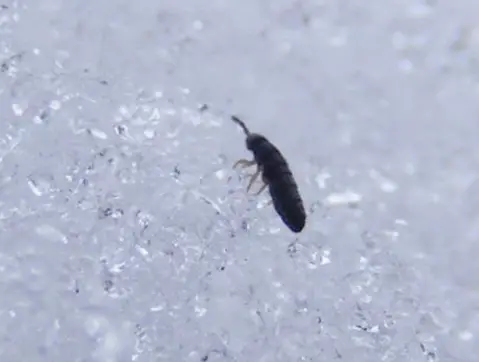
Bugs have various strategies to survive the harsh winter conditions. Some bugs go into diapause, a state similar to hibernation, while others lay eggs and die. However, many bugs find shelter in various habitats to protect themselves from the cold. Here are some common winter habitats for bugs.
Indoor Infiltration
Bugs like cockroaches, spiders, and stink bugs often infiltrate buildings during the winter months. They can enter through small cracks and crevices in walls, doors, and windows. Basements and crawl spaces are also common hiding places for bugs seeking warmth and protection, and the extra benefit is that some homes are also a good source of food for them.
Underground and Soil Dwelling
Many bugs, such as ants, termites, and earthworms, burrow underground or seek shelter in soil during the winter. The soil provides insulation and protection from the cold temperatures. Some bugs even create their own tunnels and burrows to survive the winter.
Tree Bark and Leaf Litter Refuge
Bugs like ladybugs, mourning cloak butterflies, and wooly bear caterpillars often seek refuge in tree bark and leaf litter during the winter. These habitats provide protection from the wind and cold temperatures. Bugs can also find food and moisture in these areas.
Hiding in Rocks and Stone Creations
Rocky areas and stone creations like retaining walls and garden beds can provide shelter for bugs during the winter. Bugs like spiders, beetles, and centipedes can hide in cracks and crevices, protected from the cold.
Diapause
Some bugs, like mosquitoes and monarch butterflies, enter diapause during the winter. In this state, they slow down their metabolism and become dormant, allowing them to survive the winter without food or water.
Lay Eggs and Die
Some bugs, like cicadas and annual plants, lay eggs before dying in the fall. The eggs then hatch in the spring, allowing the new generation to survive the winter.
Overall, bugs have various strategies to survive the winter months. By finding shelter in protected places like soil, tree bark, and buildings, bugs can survive the cold temperatures and emerge in the spring ready to thrive.
Migration and Movement of Bugs
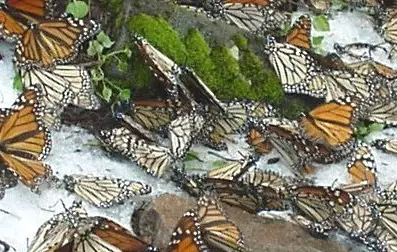
Bugs have different ways of dealing with the cold winter months. Some bugs migrate southward to warmer climates while others move to local areas with warmer temperatures.
Southward Migration
Some bugs, like monarch butterflies, migrate southward to avoid the cold winter weather. Monarch butterflies can travel up to 3,000 miles from Canada and the United States to Mexico. Wind patterns and warmer temperatures in the south help guide the butterflies on their journey.
Local Movement to Warmer Areas
Other bugs, like ladybugs and stink bugs, move to local areas with warmer temperatures. They may seek refuge in buildings or homes, or simply move to a warmer spot outside. Some bugs, like wooly bear caterpillars, can survive harsh winters by freezing and thawing before they mature to become Isabell tiger moths.
It’s important to note that not all bugs migrate or move to warmer areas. Some bugs, like ants, hibernate in underground colonies during the winter months. Hibernation is a way for bugs to slow their metabolism and minimize the need for food and water.
Overall, bugs have adapted different strategies to survive the cold winter months. Whether it’s migrating southward or moving to a warmer area, bugs have found ways to deal with the changing seasons.
Life Cycles and Development of Bugs in Winter
Egg Stage
During winter, some insects lay their eggs in the fall, while others lay their eggs in the winter. The eggs of these insects can survive the harsh winter temperatures and hatch in the spring.
Some common insects that lay eggs in the winter include mosquitoes, ticks, and black flies. The eggs of these insects are often laid in water or on plants, where they can remain dormant until the spring.
The adult insects die off during winter after they’ve laid their eggs to ensure a new generation will thrive.
Larvae and Pupae Stage
Some insects overwinter in the pupal stage, then emerge as adults in the spring. Moths in the Silkworm Family, Saturniidae, may be found attached to food plant branches as pupae in the winter. Other insects overwinter in the larval stage.
For example, woolly bear caterpillars overwinter in leaf litter or under rocks, where they can remain dormant until the spring.
Adult Stage
Many insects hibernate as adults. Mourning cloak butterflies have an internal compound that acts as an antifreeze, allowing them to survive winters in their adult forms while tucked under rocks or in tree bark crevices.
Ladybugs and stink bugs will often seek shelter in homes or other structures to overwinter.
Insects that overwinter as adults often mate and reproduce in the spring, laying eggs that will hatch into the next generation of insects.
Some insects, such as mosquitoes and ticks, can transmit diseases to humans during this process.
Understanding the life cycles and development of bugs in winter can help individuals prepare for potential pest problems in the spring. It is important to take steps to prevent insect infestations in and around homes, as well as to protect oneself from insect-borne diseases.
Specific Bugs and Their Winter Behavior
Ants and Termites

Ants and termites are social insects that live in colonies. During the winter, they will retreat to their underground nests where they can stay warm and protected from the cold. Termites will also burrow deeper into the ground to avoid freezing temperatures.
See Related: How To Keep Ants Out Of An RV
Bees and Wasps
Bees and wasps are also social insects that live in colonies. Most bees and wasps will die off in the winter, with only the queen surviving to start a new colony in the spring. Some species of wasps, such as yellow jackets, will hibernate in protected areas like attics or wall voids.
See Related: How To Keep Bees Out Of RV
Butterflies and Moths
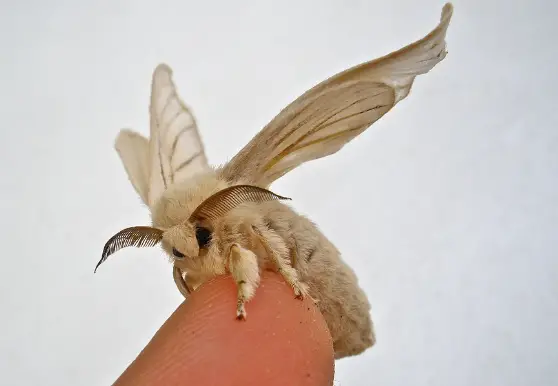
Butterflies and moths have different strategies for surviving the winter. Some species, like the monarch butterfly, will migrate to warmer climates. Others will overwinter in protected areas like leaf litter or tree bark. Moths in the Silkworm Family, Saturniidae, may be found attached to food plant branches as pupae in the winter.
Flies and Mosquitoes
Most flies and mosquitoes will die off in the winter, with only their eggs surviving to hatch in the spring. However, some species of flies will overwinter inside and emerge in large numbers during the first warm days of spring.
Spiders and Other Pests
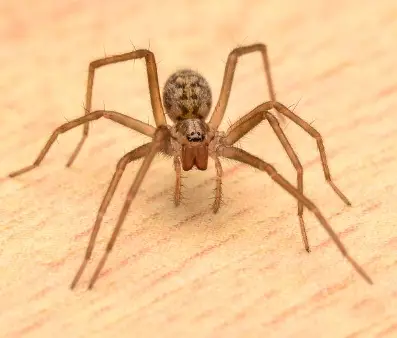
Spiders and other pests, like stink bugs and cockroaches, will seek shelter in warm and protected areas like homes and buildings. They may also hibernate in protected areas like leaf litter or tree bark.
How Bugs Prepare for Winter
As temperatures begin to drop, bugs start preparing for the winter season. While some insects migrate to warmer regions, others find ways to survive the cold weather. Here are some of the ways bugs prepare for winter:
Storing Food
Insects such as ants and bees store food during the summer and fall seasons to ensure they have enough to eat during the winter. They create stockpiles of food in their nests or hives to last them through the cold months when food is scarce.
Producing Glycerol
Some insects produce glycerol, a substance that acts as an antifreeze. Glycerol helps to prevent ice crystals from forming in their bodies, allowing them to survive in extremely cold temperatures.
Lowering Body Temperature
Some bugs lower their body temperature in order to conserve energy during the winter months. This process, known as diapause, causes the insects to become sluggish and inactive until the warmer springtime temperatures arrive.
Seeking Shelter
Many insects seek shelter during the winter months to avoid the cold weather. They may burrow underground, hide in tree bark, or find their way into homes and buildings to stay warm.
Conserving Water
Insects also conserve water during the winter season. Since water freezes at low temperatures, insects need to ensure they have enough water in their bodies to survive. Some bugs, such as the desert locust, are able to extract water from the food they eat, while others, like the camel spider, can go for long periods of time without water.


